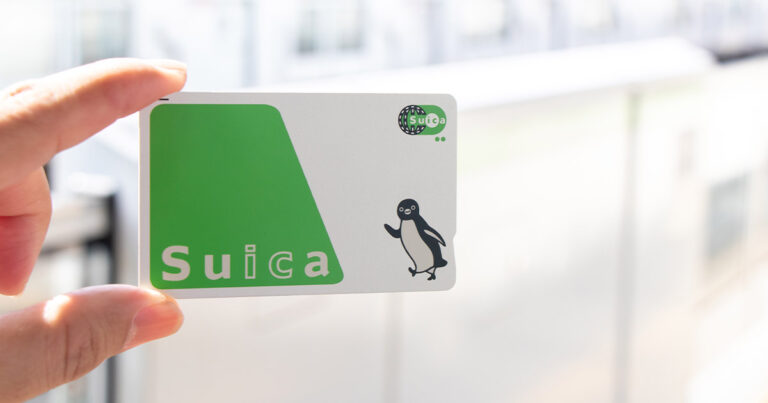Essential facts you must know about money laundering

This article covers:
Hollywood is awash in movies trying to convince you that money laundering is an art, a science or even something in between. Some even go so far as to glamourise it and make it – and its fictional perpetrators – seem cool and emulation-worthy.
Whether these movies present a realistic picture of money laundering or manipulate actual facts to simply make the box office ring (ironically, with money that their film purports to demystify in the first place!), the truth is that outside the stage-managed confines of showbiz, money laundering is a real-world problem and a serious one at that.
What is money laundering?
“Suitcases stuffed with 200,000 dollars of Republican campaign funds; money being ‘laundered’ in Mexico.”
— The first recorded use of the term ‘money laundering’ in the Guardian newspaper (UK), 19 April 1973
The United Nations Office on Drugs and Crime estimates that between USD 800 billion and USD 2 trillion worth of money is ‘laundered’ every year. This translates to a whopping 2-5% of global GDP, proof that money laundering is a global problem in addition to a grave one.
But what exactly is money laundering and how does it work? And what kind of ‘detergents’ do launderers use to ‘clean’ their dirty money?
Put simply, money laundering is the act that enables criminals to camouflage money that originates from a dirty, illegal Source ABC so that it looks like it came from a clean, legal Source XYZ.
By converting, storing, transporting, or concealing the origins and nature of dirty money in a roundabout manner, they disguise it, i.e. ‘launder’ it so that it appears clean.
Money laundering often involves transferring money through several countries to obscure its origins and confuse law enforcement officials.
Without money laundering, criminals are unable to use the dirty money because it may connect them to the original criminal activity which could lead to a seizure of the money as well as legal proceedings.
How does money laundering work?
The source of dirty money and the parties involved may differ but the basic process of money laundering remains the same. It consists of three main steps:
Step 1: Placement
Very High Risk
To begin with, launderers place dirty cash into legitimate financial institutions such as banks to initiate the cleaning process.
All over the world, banks are legally obligated to report high-value, suspicious-looking transactions; therefore at this initial stage, criminals face a very high risk of exposure and arrest.
Step 2: Layering
Very High Complexity
This is where the actual cleaning of the dirty money happens. To make the process as complex and difficult to trace as possible, multiple transactions are carried out to move dirty money through the financial system. Some of the pathways utilised during this step include:
- Changing the money’s currency
- Multiple inter-bank transfers
- Multiple structured deposits and withdrawals aka ‘smurfing’ (smaller amounts look less suspicious)
- Purchasing high-value items such as diamonds, cars or property
- Multiple wire transfers between different accounts in different countries (especially to countries with ‘bank-secrecy’ rules)
- Opening ‘shell’ companies
- Investing in businesses with minimal paperwork such as currency exchanges, art galleries and car washes
- Using money ‘mules’ – real people to withdraw and deposit dirty money; they may be unwitting participants in the laundering scheme
Step 3: Integration
Criminals: Low Risk
Law enforcement: Low Chance Of Initiating Criminal Proceedings
After going through multiple laundering pathways, the dirty money finally re-enters the mainstream financial system as a legitimate transaction. This often takes the form of business investment, purchase, or the sale of an asset bought during the layering stage.
By this point, the criminal is generally able to use the ‘clean’ money without getting caught.
Money laundering is a ubiquitous practice and no country in the world is immune to its egregious effects.
The next few sections explore why it is a serious and seemingly intractable problem and what is being done to counter its consequences.
Why is money laundering a serious problem?
Unfortunately, the omnipresent, ‘liquid’ and non-transparent nature of cash makes it a magnet for international terrorists, drug traffickers, and people traffickers. It also drives their need for money laundering pathways.
Money laundering is also the engine that drives ‘business as usual’ for:
- Mobsters and organised gangs
- International criminals
- Animal traffickers
- Smugglers (tobacco, alcohol, arms, human organs, etc)
- Ponzi schemers and con artists
- Corporate embezzlers and white-collar criminals
- High net worth tax evaders
Corrupt politicians and public officials also launder money from bribes and kickbacks so that it appears clean and legitimate.
Drug traffickers are especially in need of efficient and below-the-official-radar laundering systems because they deal almost exclusively in cash (it is not a credit or receipt-based business, after all!).
Huge quantities of cash are not only a logistical nightmare – storage, protection, and transportation is the key problems – they also tend to attract the attention of law enforcement officials and open the door to criminal investigation and prosecution.
The strength and scope of cash-based shadow economies in many countries make economic and financial systems less transparent, promote crime and corruption and also make it difficult to hold terrorists, drug traffickers, tax evaders, and mobsters legally accountable for their crimes.
In addition, when dirty money travels through countries with bank-secrecy rules, it becomes very difficult to track and recover. And because many money-laundering schemes either go unnoticed or are unprovable and therefore un-punishable, they can have serious effects on the social and economic health of a country.
The US Dollar and the Euro are the two most popular currencies among money launderers. Both are important reserve currencies and are also heavily traded on international forex markets.
Therefore, their laundering volumes can affect their supply/demand cycles which in turn can, directly and indirectly, affect many national economies.
What is being done to tackle the issue?
All over the world, numerous governmental and intergovernmental organisations are making an effort to tackle the menace of money laundering, although they’re far from eliminating it completely.
In the United States, government agencies such as the Federal Bureau of Investigation, the Department of Justice, the Drug Enforcement Agency and the Internal Revenue Service all have divisions to investigate and address money laundering.
The country has also passed multiple laws to eliminate anonymous banking (which makes money laundering possible) and to make money laundering a crime in itself instead of just an element of another crime.
In India – a country traditionally vulnerable to money laundering as well as cash-loving ‘benami’ and ‘hundi’ transactions – the Prevention of Money Laundering Act (PMLA) 0f 2002 seeks to prevent and control money laundering and punish violators.
Some countries are cracking down on the art market that is often used to launder dirty money and fund terrorist groups such as IS.
Switzerland, for example, has revised its Anti-Money Laundering Act to make the art market more transparent and less susceptible to shady laundering deals.
The international community is also taking action by forming groups such as the Financial Action Task Force on Money Laundering (FATF) and the Asia/Pacific Group on Money Laundering.
Inter-governmental organisations such as the United Nations, the International Monetary Fund and the World Bank also have anti-money laundering divisions.
Why is money laundering a risk for remittance firms?
In general, criminals use money remittance and currency exchange firms for money laundering in one of two ways:
- By performing transactions without providing knowledge of the illegal origin or destination of the funds
- By directly involving the company’s staff, either through their complicity or through a takeover of the business under the guise of an investment or partnership
For remittance firms, the risk of being an unwitting part of a money-laundering scheme and of facing subsequent legal action stems from many different factors:
For the most part, remittance firms have simple, easy-to-use transactional processes and their business models are cash-based. This naturally makes them an attractive vehicle for money launderers.
In addition, many firms have a broad global footprint and often impose less stringent customer identification rules (such as KYC) than traditional banks or credit institutions.
They also make inter-country remittances possible through currency exchange which is an important step in the laundering process, particularly during the placement stage. It is very difficult to trace the origins of dirty money once it has been exchanged.
And finally, the size of the remittance firm also matters. Smaller firms often lack knowledge about the risks involved with certain types of transactions or what appears to be a ‘fabulous new business opportunity’.
This makes them more susceptible to takeovers by criminals who then use the firms as conduits for laundering dirty money.
What can remittance firms do to prevent money laundering?
Remittance firms are playing an increasingly important role in the global financial ecosystem. They help promote financial inclusivity, make financial transactions cheaper, faster and more convenient and help contain shadow economies.
A burgeoning cashless revolution is taking place all over the world and remittance firms are a big part of it.
Despite their vulnerability to money laundering, remittance firms can and must take steps to protect themselves and their customers by:
1. Completing due diligence on all customers
Instarem has both individual and corporate customers and the firm is very particular about its Know your Customer (KYC) policies for both.
For individual customers, Instarem gathers basic information such as legal name, current and permanent address, telephone number, nationality, date of birth and name of employer.
Before they can initiate any transaction, customers are also required to prove their identity by showing a valid personal identification document such as passport, country ID card or driver’s licence.
Corporate customers and legal entities are required to provide details such as registered company name, legal form and legal domicile. Valid identification documents are mandatory for them as well.
All this information is stored in Instarem’s secure database and checked/updated at regular intervals.
2. Making all transactions transparent & traceable

Remittance firms must ensure the traceability of transactions to establish the origin of funds and thus reduce the risk of money laundering.
They must obtain information on the customer and his intended transactions and then verify it through proper identification certificates.
Customers must not be allowed to skip any step in the transaction and each step must be digitally recorded and stored safely.
3. Staying on top of new ‘trends’ & developments In the money laundering space
Knowledge is power.
And there is no such thing as a free lunch.
Criminals are getting smarter and continually finding new ways to circumvent anti-money laundering laws. Therefore it is incumbent upon firms to stay updated on new developments and devise procedures to effectively deal with these criminal tactics.
Also, when approached with potentially lucrative investment or partnership opportunities, remittance firms must thoroughly investigate the opportunity and say No to deals that appear too good to be true.
4. Establishing a strong anti-money laundering policy
Setting up a formal policy framework can go a long way toward establishing a company-wide culture of zero-tolerance for money laundering. The policy can emphasize the serious nature of the crime, define what constitutes a suspicious transaction and include instructions on when and how to report such suspicious transactions. By constantly monitoring their money laundering risk exposure, remittance firms will be better able to manage their policies and redesign them if necessary.
5. Paying attention to security
Cyber criminals and money launderers often work hand-in-hand to cleverly clean dirty money.
Remittance firms must be vigilant about their cyber security procedures. They must also protect their own privacy by being discreet with their financial and operational data.
Remittance firms that are vigilant and informed will be better prepared to deal with the menace of money laundering and keep themselves, their employees and their customers safe from potential pitfalls.
Instarem stands at the forefront of international money transfer services, facilitating fast and secure transactions for both individuals and businesses. Our platform offers competitive exchange rates for popular currency pairs like USD to INR, SGD to INR, and AUD to INR. If you're looking to send money to India or transfer funds to any of 60+ global destinations, Instarem makes it easy for you. We are dedicated to simplifying cross-border payments, providing cutting-edge technology that support individuals and businesses alike in overcoming traditional fiscal barriers normally associated with banks. As a trusted and regulated brand under the umbrella of the Fintech Unicorn Nium Pte. Ltd., and its international subsidiaries, Instarem is your go-to for reliable global financial exchanges. Learn more about Instarem.

























